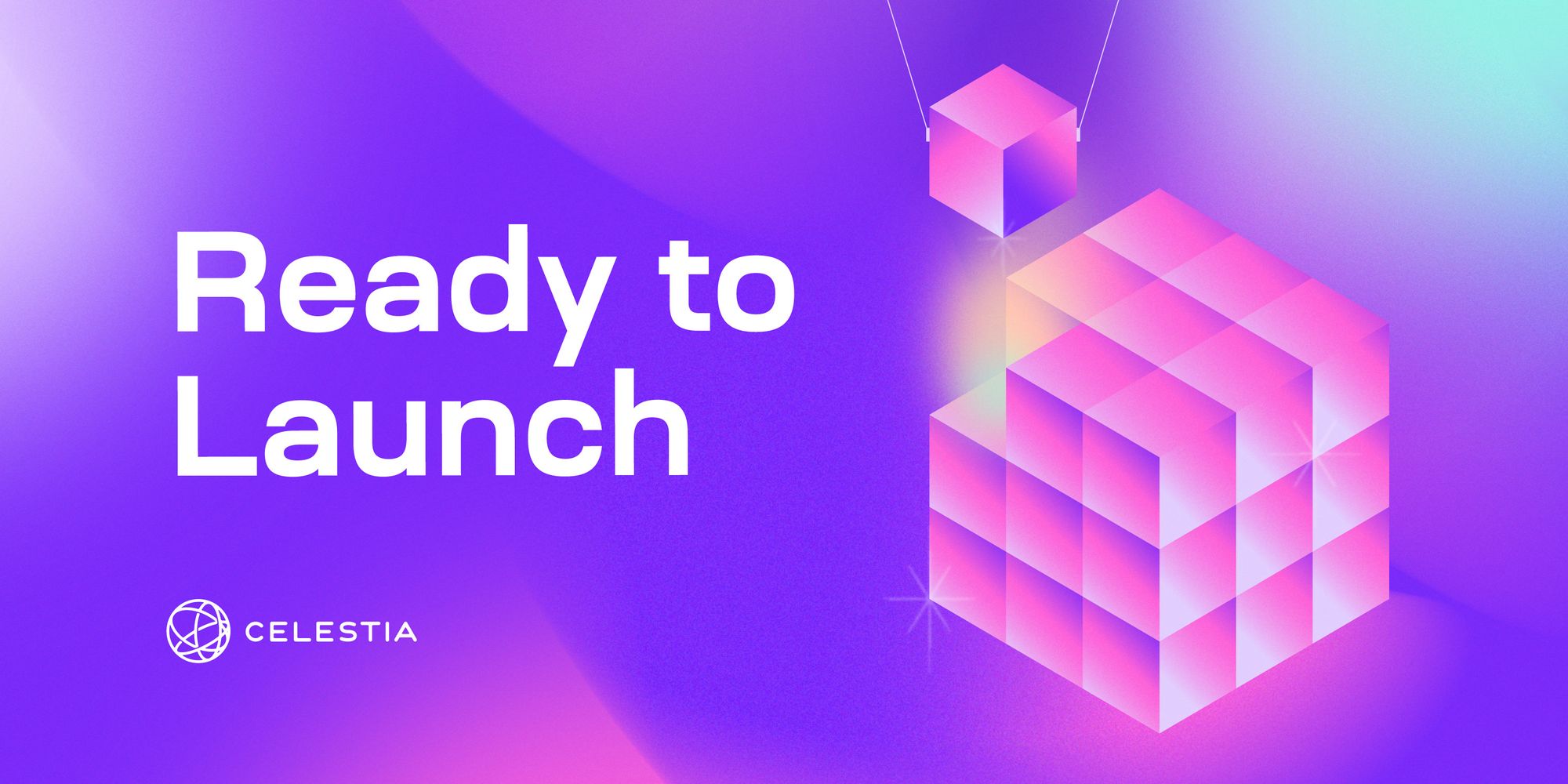Celestia is ready to launch

The journey began in 2019 with the ambitious goal of creating a modular blockchain ecosystem with data availability layers and “execution engines” that seamlessly integrate. This vision has evolved into a thriving and collaborative ecosystem.
Now, after years of development, the Celestia network is ready to launch.
Exploring the unexplored
Initially, Celestia will be experimental, and so launch will be referred to as Mainnet Beta. Introducing a new scaling primitive like data availability sampling (DAS) means uncharted territory that the entire ecosystem will explore together.
Expect occasional instability or reduced performance. Anticipate updates, fixes, and enhancements driven by our community of users and developers. Proceed with caution, but recognize that Mainnet Beta is where Celestia will evolve into a stable cornerstone for the modular stack. It's time to start the journey.
Launch schedule
Between now and Mainnet Beta, the Celestia Foundation will coordinate with the genesis validators to collect their genesis transactions. Those transactions will be included in the genesis block collectively created by a decentralized validator set. Once the genesis block is finalized by the validator set through consensus, Celestia’s Mainnet Beta network will be live.
Network features at Mainnet Beta
Though initially experimental, Mainnet Beta’s features enable rollups and other modular chains to use Celestia as a data availability and consensus layer.
- Data availability sampling: the first modular data availability layer with data availability sampling (DAS) light nodes.
- Celestia-node API for rollups: efficient publishing and retrieval of data blobs through the celestia-node API.
- 2-8 MB blocks: support for up to 8 MB blocks, starting with 2MB at genesis and upgradeable through onchain governance.
- Early/experimental block reconstruction: An early experimental version of block reconstruction for full storage nodes, and bad encoding proofs for light nodes.
Future additions
Additional features and improvements to existing Mainnet Beta features can be driven by the community after launch. Some notable potential future improvements include:
- Support for pruning historical blob data to significantly reduce node storage requirements.
- A new ‘partial node’ type for light nodes that verify the Celestia L1 state transitions, or fraud proofs for light nodes to verify invalid L1 state transitions.
- Deploying Blobstream to Ethereum Mainnet so L2s can use Celestia for modular data availability.
- Production-ready and more battle-tested support for block reconstruction and bad encoding proofs to achieve full level 3 and above light node security.
- Light node network monitoring to determine the maximum block size suitable while achieving level 4 light node security.
- More efficient block and mempool network propagation for bigger block sizes.
Looking ahead
Now for the fun stuff. With the arrival of Mainnet Beta, you can join the ecosystem by deploying a rollup, staking with validators, or by running a sampling light node.
See you all at Mainnet Beta!

